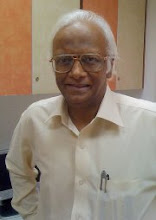THE FALL OF A
KING
(onionlive.com)
It is difficult not to admire Vijay Mallya, the flamboyant flying baron, with a lifestyle that could fill gossip columns all through the year. His son Siddharth’s fiancée, the rising star Deepika Padukone, adds a magic charm to the Mallya clan. If celebrity status is tested by the ton-load of rumours they generate, the grapevine has it that Deepika’s new flat in Mumbai is a gift from a generous well-wisher, whoever he may be.
But flying is a different ball game, especially flying amidst
turbulence. As India India
While shareholders are complaining that they are not getting the
value for their money, passengers are complaining that they are not getting the
seats they have reserved. The companies that have leased their planes to
Kingfisher are now demanding their planes back as payments have fallen behind
schedule.
In business for six years,India
In business for six years,
India, the fastest growing global aviation market today, is expected
to be the fourth biggest aviation market by 2020 and third biggest domestic
market after the US and China. India Brazil Brazil
Already experiencing a shortage
of pilots, the demand for pilots as well as engineers and cabin crew will grow,
which is good news for the job market. And the
debut of Dubai
The Indian aerospace market will need nearly 1,100 commercial jets
worth $130 billion over the next 20 years, a windfall for global aircraft
industry. Karnataka is setting up a 250-acre aerospace special economic zone
(SEZ) at Devanahalli in Bengaluru.
With a
good bail-out package, Kingfisher could turn around in two years and rule the
sky. The King could be King once again!
